Lace up your boots and journey with us through these captivating hiking trails in India, each promising an adventure unlike any other.
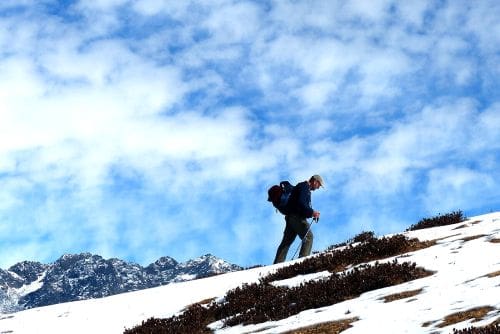
Image Credit: Paul Hamilton, CC BY-SA 2.0, via Wikimedia Commons
Nestled amidst the whispers of rustling leaves and the chorus of distant bird calls, a tapestry of hiking trails unfolds before intrepid explorers. From brief, invigorating climbs to the serene sanctuaries atop ancient temples, to the narrow, winding paths that guide wanderers to the stoic walls of historic forts and the guiding beams of secluded lighthouses, each trail narrates a story.
A top-tier hiking destination
The breathtaking landscapes of India’s hills and mountains are a significant contributor to the country’s status as a top-tier travel destination. In the places that are traversed by the mighty Himalayan mountains, India offers a plethora of opportunities for those interested in trekking. It’s hard to overstate how fantastic trekking is as an adventure sport in the Indian Himalayas. These are among the most gorgeous hiking routes in India that give a fascinating experience.
David Scott Trail – one of the best hiking trails in Meghalaya
The David Scott Trek in Shillong is not only one of the greatest ways to enjoy the natural beauty of Meghalaya; it is also one of the most intriguing remains of the country’s British past.
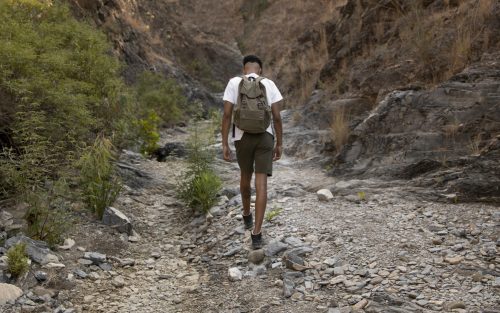
Image Credit: Via freepik
The path, which was initially intended to be used to construct a trading route between present-day Cherrapunjee and Bangladesh, was given its name after David Scott, a British Raj administrator who served during the 19th century. It is thought by most people to be one of the best hiking trails in Meghalaya and the Khasi hills.
An overview of the flora you can find along the David Scott Trail
This region, known for its unique ecosystem and abundant rainfall, supports a diverse range of flora. The trail winds through a landscape that includes rolling hills, rivers, and valleys, each hosting distinct plant species.
Tropical Forests: The trail traverses through lush tropical forests, characteristic of the Meghalaya region. These forests are home to a wide variety of trees, including species of oak, chestnut, and bamboo.
Orchids: Meghalaya is famous for its orchids, with several species adorning the forest canopy and undergrowth. The moist and humid conditions of the region provide an ideal environment for these exotic flowers.
Ferns and Mosses: The high humidity and frequent rains in the area result in an abundance of ferns and mosses. These plants cover the forest floor and often drape the trees, giving the forests a mystical, green appearance.
Medicinal Plants: The Khasi and Jaintia hills are known for their rich tradition of herbal medicine. The forests along the David Scott Trail are home to numerous medicinal plants used by local communities for centuries.
Rhododendrons: While not as prevalent as in the higher Himalayan region, rhododendrons can also be found in some parts of the trail, adding colour to the landscape, especially during their blooming season.
Fruit Trees and Plantations: In the more cultivated areas and villages along the trail, one can find various fruit trees like oranges, lemons, and pineapples, as well as betel nut plantations.
Unique Flora: Due to the unique climatic conditions of the Khasi Hills, the region supports several endemic plant species, some of which can be seen along the trail.
The David Scott Trail not only offers a window into the rich cultural history of Meghalaya but also allows trekkers to experience the diverse and lush flora of the region, making it a rewarding experience for nature enthusiasts and botanists.
Tungnath – draws a large number of hikers and trekkers
The Tungnath Trek, located in the Indian state of Uttarakhand, is part of the majestic Garhwal Himalayas. The Tungnath Temple is a sacred place whose name, when translated to English, literally means “God of the Mountain Before.” Not only is it the tallest temple dedicated to Lord Shiva, but it is also the tallest of the five PanchKedar temples. It is located in the most picturesque setting possible.
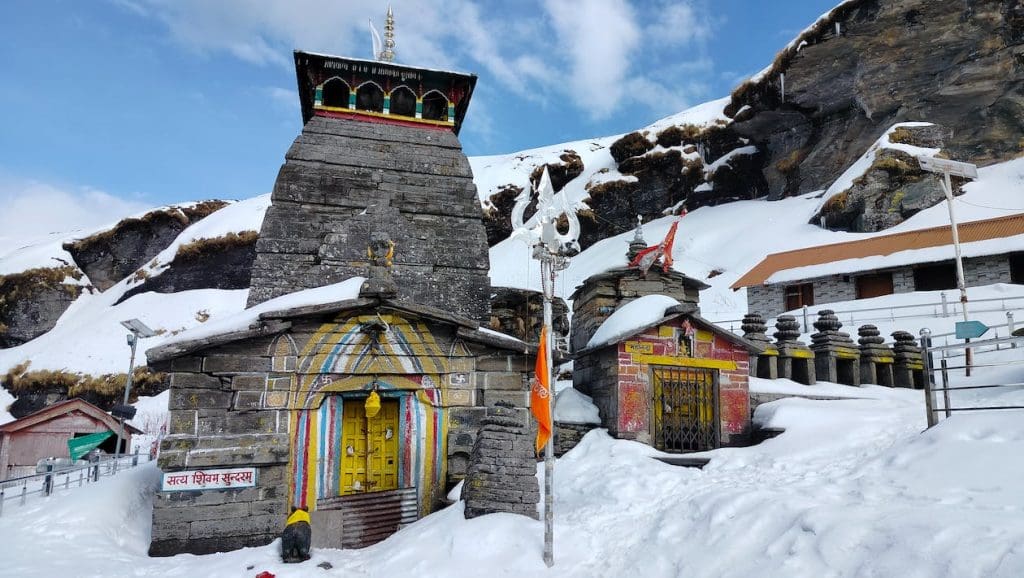
Image Credit: Vinod Singh Via Freepik
The months of March through June are the peak season for this attraction since it is also a well-known natural route that draws a large number of hikers and trekkers. The Tungnath climb is one of the easier ones to do because the closest town, Chopta, is only three to four kilometres away. Chopta is at an altitude of 3680 metres and is only three to four kilometres away.
Diverse ecosystems during this trek
This trek, leading up to one of the highest Shiva temples in the world, offers a serene experience through diverse ecosystems. The flora along the Tungnath Trek is characteristic of the Himalayan region and includes a mix of alpine and sub-alpine species, adapted to the high altitude and cooler temperatures.
Rhododendron Forests: The lower and middle elevations of the trek are marked by dense forests of rhododendrons, known locally as ‘Buransh’. These forests are especially vibrant during the blooming season, usually from April to June, when the flowers cover the landscape in shades of red and pink.
Oak and Pine Forests: Alongside rhododendrons, the forests comprise oak and pine species. These trees dominate the lower altitudes and provide a lush green canopy, offering shade and a rich habitat for various bird species.
Sub-Alpine and Alpine Meadows: As the trek ascends, the forest canopy gives way to sub-alpine and alpine meadows, known locally as ‘Bugyals’. These meadows are home to a variety of grasses and small flowering plants, including different species of anemones, geraniums, and asters.
High Altitude Flora: At higher altitudes, close to the Tungnath temple and beyond towards Chandrashila, the vegetation becomes sparse and includes hardy species adapted to the harsh climate. This includes various types of mosses, lichens, and small shrubs.
Medicinal Plants: The region is also known for its variety of medicinal plants, which have been used in traditional medicine for centuries. These include species like Aconitum, used in Ayurveda and local medicinal practices.
Rare and Endemic Species: The trek area is also home to several rare and endemic plant species unique to the Himalayan ecosystem. Conservation efforts are in place to protect these species and their habitats.
The Tungnath Trek provides not only a spiritual journey but also a chance to immerse oneself in the natural beauty and diverse flora of the Himalayan region. The changing landscapes, from lush forests to alpine meadows, offer trekkers a unique and enriching experience.
Aravalis – one of the oldest mountain ranges on the Indian peninsula
The Aravali Hills are one of the oldest mountain ranges on the Indian peninsula. They stretch over the states of Rajasthan and Gujarat and provide tourists with a variety of exciting opportunities for outdoor recreation, such as trekking and camel safaris.
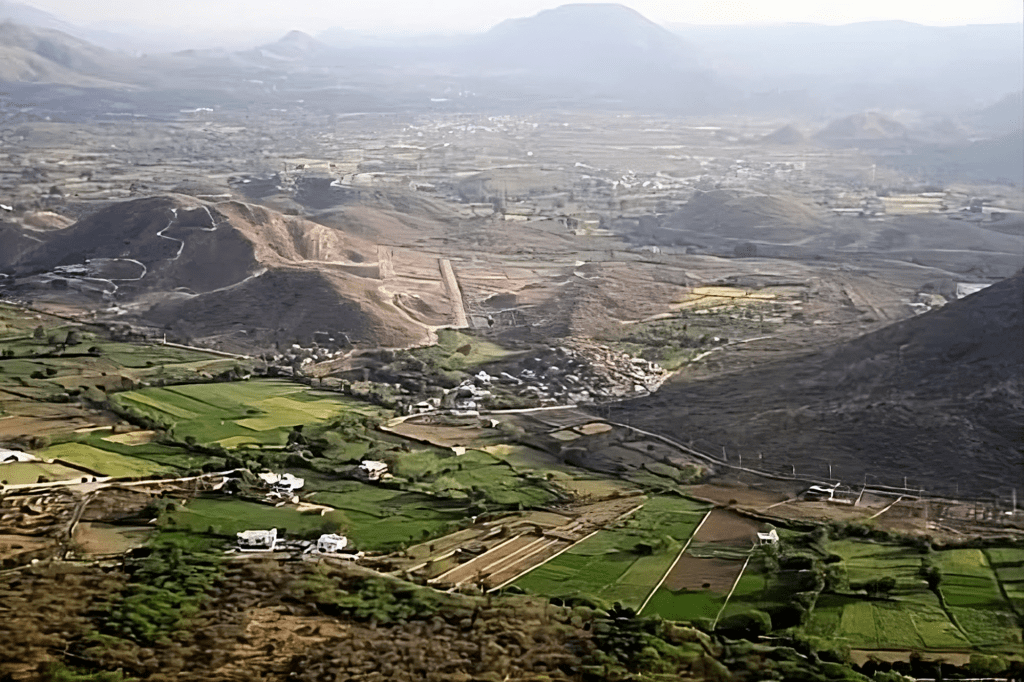
Image Credit: TeshTesh, CC BY-SA 4.0 via Wikimedia Commons
The Aravalis is home to a variety of hiking paths, most of which are quite short and seldom exceed four or five hours in length. On the other hand, they provide the possibility of visiting a variety of pilgrim centres. One of the most well-known routes across the Aravali Mountains goes to the Rashtrasena Mata temple, which is located on top of a rocky cliff that is around 500 feet high.
Valley of Flowers Trek – the most breathtaking place to go hiking across the globe
The Valley of Flowers, located around 500 kilometres northeast of Delhi, is widely regarded as one of the most breathtaking places to go hiking across the globe. It is the crown jewel of the Himalayan state of Uttarakhand.

Image Credit: Rafał Kozubek, CC BY-SA 4.0 via Wikimedia Commons
It is a component unit of the Garhwal area, which is famous for the picturesque valleys, pure water streams, and unusual flora and wildlife that can be found there. The difficult journey to the Valley of Flowers starts at Govind Ghat, and from there it takes around seven hours to arrive at Ghangaria.
A unique alpine ecosystem for hikers
The Valley of Flowers Trek, located in the West Himalayan region of Uttarakhand, India, is renowned for its stunning floral diversity, particularly during the monsoon season when the valley comes alive with a myriad of blooms. The area, a UNESCO World Heritage Site, showcases a unique alpine ecosystem with a variety of high-altitude flora. Some of the key aspects of the flora found in the Valley of Flowers are:
Wildflowers: The valley is famous for its vast range of wildflowers. More than 500 different species of flowers can be found here, including orchids, poppies, primulas, marigolds, daisies, and anemones. The variety and density of flowers create a vibrant mosaic of colours that change throughout the blooming season.
Endemic Species: The Valley of Flowers is home to several endemic species of flowers that are unique to this region. These include the blue Himalayan poppy (Meconopsis aculeata) and Brahma Kamal (Saussurea obvallata), which is revered in local folklore and is the state flower of Uttarakhand.
Medicinal Plants: Many plants in the valley are known for their medicinal properties and have been used in traditional medicine for centuries. These include species like Aconitum heterophyllum, known locally as ‘Atis’, which is used to treat fever and inflammation.
Alpine Shrubs and Meadows: Apart from the wildflowers, the valley also features alpine shrubs and meadows, which are a vital part of the ecosystem. These include various species of rhododendrons and junipers.
Rare and Endangered Species: The Valley of Flowers also provides a habitat for several rare and endangered plant species. Conservation efforts are ongoing to protect these species and their unique ecosystem.
The Valley of Flowers Trek not only offers a breathtaking visual experience but also provides a rich insight into the high-altitude floral ecosystem of the Himalayas. This unique natural setting draws botanists, nature lovers, and trekkers from around the world.
Kodaikanal – the most beautiful nature trails in the area
Tamil Nadu is a state in southern India that is known for its picturesque hill stations. These hill stations were established by the British. Kodaikanal is one of the most alluring of these locations, with a lower average temperature.
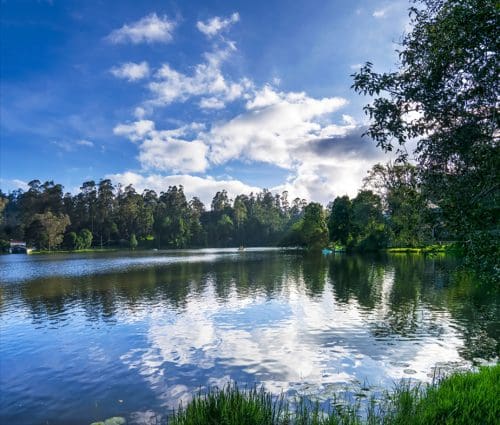
Image Credit: Kreativeart, CC BY-SA 4.0 via Wikimedia Commons
This tranquil resort is nestled within the undulating Palani hills and features some of the most beautiful nature trails in the area, in addition to hand-gliding, fishing, and golfing. A hikers’ favourite is the seven-hour, 18-kilometre Periyakulam-Adukkam-Kodaikanal walk. The trek begins in the hamlet of Periyakulam and makes its way across mild hills while hugging the bank of the raging Chezhunghu River.
Tso Moriri-Kibber Trek – magnificent and mind-bending
The austere, snowy mountain landscapes of Ladakh provide a variety of tough trekking alternatives. These alpine landscapes are located at elevations of 11,500 feet or higher, which may be both magnificent and mind-bending. The towering peaks, wind-swept valleys, cold deserts, and ancient Buddhist monasteries in the area are major draws for travellers from all over the world.
Stark beauty and unique ecosystem
The Tso Moriri-Kibber Trek, located in the Ladakh region of India, traverses through a high-altitude desert landscape known for its stark beauty and unique ecosystem. The flora and fauna of this region are adapted to the extreme conditions of high altitude, low oxygen levels, and cold temperatures.
Flora and Fauna in Tso Moriri-Kibber Trek
Medicinal Plants: The region is known for its range of medicinal plants, which have adapted to the harsh climatic conditions. These plants are often used in traditional Tibetan medicine.
Fauna: Mammals: The region is famous for its unique high-altitude wildlife. The most notable is the Snow Leopard, which is elusive but might be sighted in the winter months. Other mammals include the Tibetan wolf, blue sheep (bharal), red fox, Himalayan marmot, and the ibex.
Birds: The Tso Moriri Lake, a Ramsar Site, is an important breeding ground for birds, especially during the summer months. It attracts numerous migratory species. Notable among these are the bar-headed geese and the black-necked cranes, which are rare and endangered.
Aquatic Life: Tso Moriri Lake hosts a variety of aquatic life, including some rare species of fish and crustaceans adapted to brackish water and high-altitude conditions.
The Tso Moriri-Kibber Trek offers a unique opportunity to witness the adaptability of life in extreme conditions. The ecosystem here is fragile, and trekkers are often reminded to be environmentally conscious to preserve this unique natural heritage.
Silent Valley
A hiker’s ideal destination, Silent Valley is found in Kerala, which is located near the southwestern coast of India and is home to beautiful, undeveloped woods. The Silent Valley National Park is home to a remarkable variety of animals and is at an elevation of 2,100 metres (6,800 feet) above sea level. It spans an area of 90 square kilometres. Its tropical evergreen trees and rolling hills make it a great place for hikers and other nature lovers.
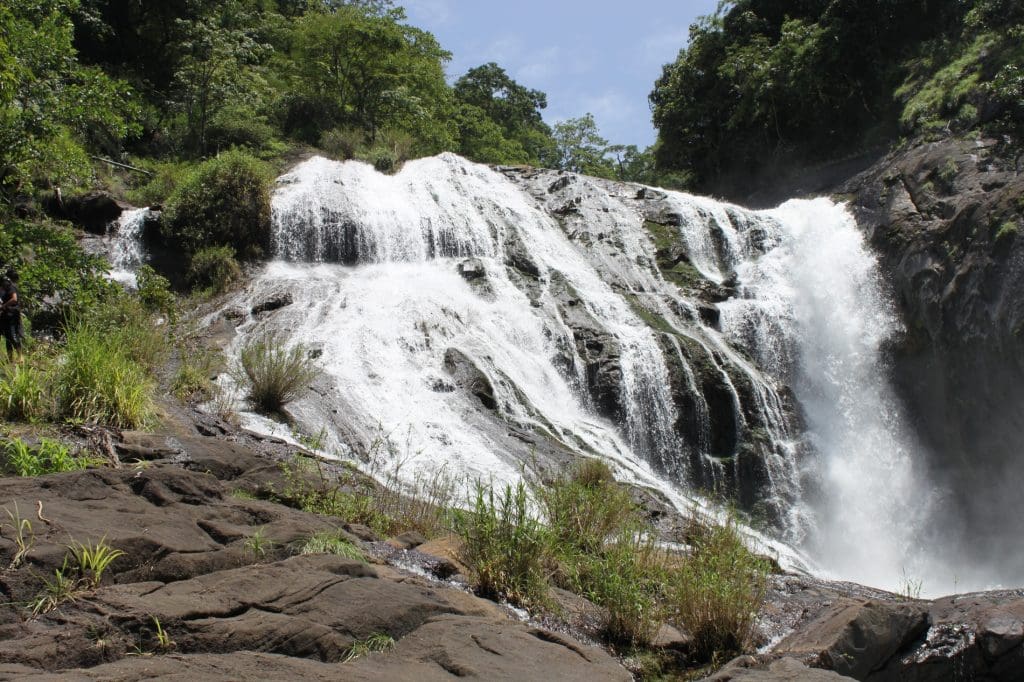
Image Credit: നിരക്ഷരൻ, CC BY-SA 3.0 via Wikimedia Commons
Araku Valley Trek – the most beautiful and challenging walk in all of India
Andhra Pradesh is home to the Araku Valley, which can be found between the cities of Vishakhapatnam and Hyderabad. This region is famous for its lush vegetation, and it is home to some of the most beautiful and challenging walks in all of India. The Araku Valley is home to a diverse topography that includes several hills, dense woods, and waterfalls. You will be able to view Jindhagada Peak while you are in the Araku Valley. This mountain is one of the best places to go trekking in India since it is the highest point in the state of Andhra Pradesh.
The flora found in Araku Valley is diverse
Tropical Rainforests: The valley is characterized by its dense tropical rainforests. These forests are home to a wide variety of trees, including species of bamboo, mango, and jackfruit. The undergrowth is typically lush, with ferns and shrubs adding to the verdant greenery.
Coffee Plantations: Araku Valley is famous for its organic coffee plantations. The climate and soil conditions in the valley are ideal for coffee growing, and it’s one of the few places in India where coffee is cultivated. The coffee plantations add a unique landscape feature to the valley, with neatly arranged rows of coffee plants interspersed with shade-giving trees like Silver Oak.
Fruit Orchards: The region is also known for its cultivation of various fruits. Orchards of banana, guava, and papaya are commonly found, alongside more exotic fruits like pineapple.
Medicinal Plants: The tribal communities in Araku Valley have a rich knowledge of medicinal plants, and the valley is home to a variety of herbs and plants used in traditional medicine. This includes plants like amla (Indian gooseberry), which is known for its high vitamin C content.
Floral Diversity: Araku Valley, especially during the post-monsoon and winter months, becomes a haven for a variety of flowers. Wildflowers bloom in abundance, adding splashes of color to the green landscape. The valley is also known for its rich biodiversity of orchids.
The flora of Araku Valley is not only a testament to the region’s rich natural heritage but also plays a crucial role in the ecosystem and the livelihoods of local communities, blending natural beauty with cultural significance.
Dzongri – the fascinating Goecha La Trek
Several factors contribute to the Dzongri-Goecha La Trek being regarded as one of the most fascinating treks in India.
This challenging trek, often considered a gateway to the grandeur of Kanchenjunga, the world’s third-highest mountain, begins in Yuksom and winds through lush rhododendron forests, serene meadows, and rugged terrains.
As trekkers ascend towards Dzongri, the landscape transforms, revealing panoramic views of towering peaks, including Pandim and Thenchinkhang. The pinnacle of this trek, Goecha La, is a high mountain pass that offers breathtaking views of Kanchenjunga’s southeastern face, making it a dream destination for passionate trekkers and nature enthusiasts.
Along this trail, one not only witnesses the enchanting beauty of the Himalayas but also experiences the rich cultural tapestry of Sikkim, with its vibrant monasteries and welcoming local communities. The Dzongri – Goecha La Trek is more than a trail; it’s an expedition into the heart of nature’s grandeur, challenging the body and rejuvenating the spirit.
Diverse Ecological zones with unique plant life
The Dzongri – Goecha La Trek, amidst the diverse ecosystem of the Himalayan region of Sikkim, is home to a rich array of flora. The trek takes adventurers through various ecological zones, each boasting its unique plant life:
Subtropical Forests: In the lower reaches, especially near Yuksom, trekkers encounter lush subtropical forests. These areas are characterized by dense undergrowth and a variety of ferns, orchids, and bamboo. The presence of numerous species of rhododendrons, which bloom spectacularly in spring, adds vibrant colours to the landscape.
Temperate Forests: As the trail ascends, the subtropical forests give way to temperate zones. Here, oak, chestnut, maple, and birch trees are common. The temperate forests are also known for their diverse species of rhododendrons – Sikkim is home to over 30 species, making this area particularly striking during the blooming season.
Alpine Meadows: Higher up, approaching Dzongri and beyond, the landscape changes to alpine meadows and scrub. These areas, particularly during the summer months, are dotted with a variety of wildflowers including primulas, poppies, and irises, creating a colourful tapestry against the rugged mountain backdrop.
High Altitude Flora: Near the Goecha La pass, the vegetation becomes sparse due to the high altitude and harsher climate conditions. Here, one might find specialized high-altitude plants, such as saxifrages and edelweiss, adapted to survive in extreme conditions.
This trek is not just a journey through varied altitudes, but also a passage through a diverse range of ecological zones, each with its own distinct set of flora. The trek offers an excellent opportunity for botany enthusiasts and nature lovers to witness the rich biodiversity of the Himalayan region.
Hampta Pass Trek – one of the most renowned treks in Uttarakhand
Many people consider the Hampta Pass Trek one of the most renowned treks in the northern Indian state of Uttarakhand.
Hikers will get a first-hand look at stunning surroundings throughout this adventure. You will get to see many different aspects of nature throughout this hike, some of which include expansive green fields, glacial valleys, and towering mountains. During the whole hike, you will be treated to spectacular views of the snow-covered Dhauladhar Peaks, and you will also be able to hear the soothing murmurs of the rivers and creeks along the way.
Ecological zones and flora for trekkers to enjoy
.This trek is renowned for its stunning landscape and the diverse range of flora it offers, which changes dramatically as the elevation increases.
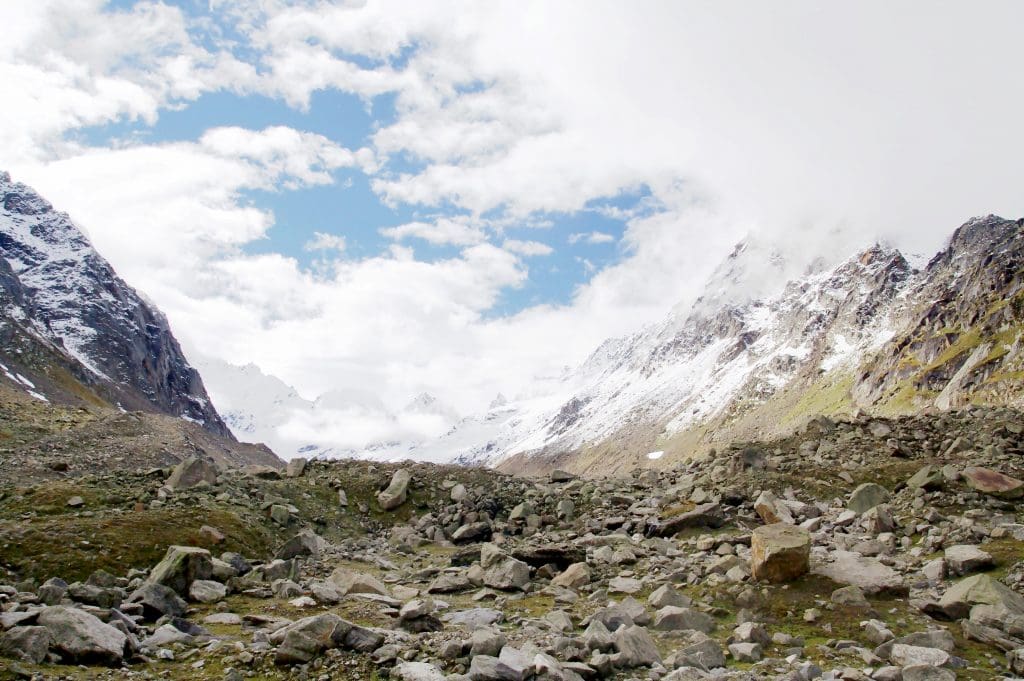
Image Credit: Raja Selvaraj, CC BY 2.0 via Wikimedia Commons
Subalpine Flora: The trek starts from the lush Kullu Valley, characterized by its subalpine forests. In these lower regions, trekkers are greeted by thick forests of deodar, oak, and pine. The undergrowth in these forests is rich with ferns, mosses, and a variety of flowering plants, offering a verdant, green landscape especially during the post-monsoon season.
Alpine Meadows and Shrubs: As the trail ascends, the dense forest canopy gives way to alpine meadows, known locally as ‘bugyals’. These meadows are adorned with a multitude of wildflowers during the summer months, including varieties of Himalayan daisies, anemones, and the vibrant blue Himalayan poppy. These areas are also known for their high-altitude medicinal plants and herbs.
High-Altitude Flora: Approaching the Hampta Pass, the vegetation becomes sparse due to the increase in altitude and the harsher environment. In these areas, you will find specialized high-altitude flora, including various species of rhododendrons and junipers. These plants are adapted to survive the extreme conditions of high altitudes, with low temperatures and strong winds.
Rare and Endemic Species: The trek also traverses through areas that are home to several rare and endemic plant species, unique to the Himalayan region. Botanical enthusiasts often find this trek particularly rewarding for the chance to observe such unique flora.
The Hampta Pass Trek is a delightful experience for nature lovers, offering a chance to witness the transition from lush green valleys to stark, rugged mountain landscapes, each with its own unique set of flora. The variety of ecosystems encountered on this trek makes it a botanical haven and a beautiful representation of the Himalayan region’s rich biodiversity.
Read more: Latest



